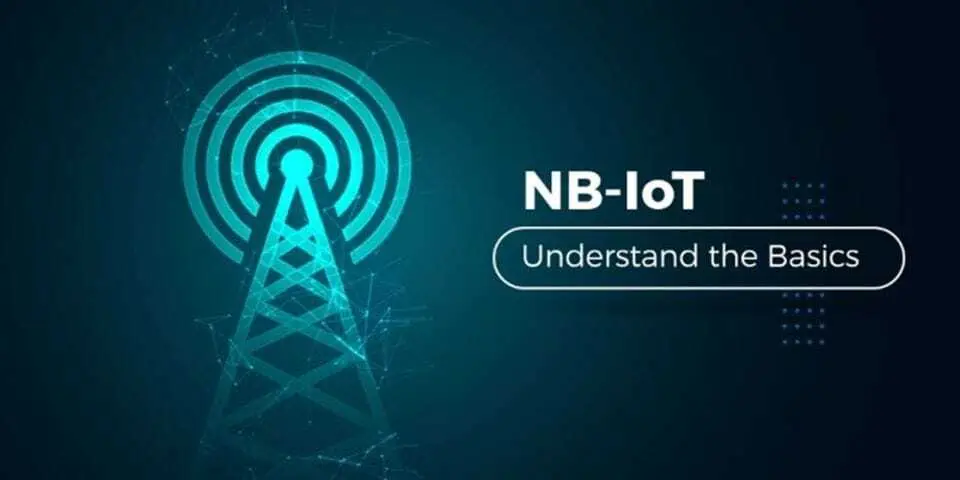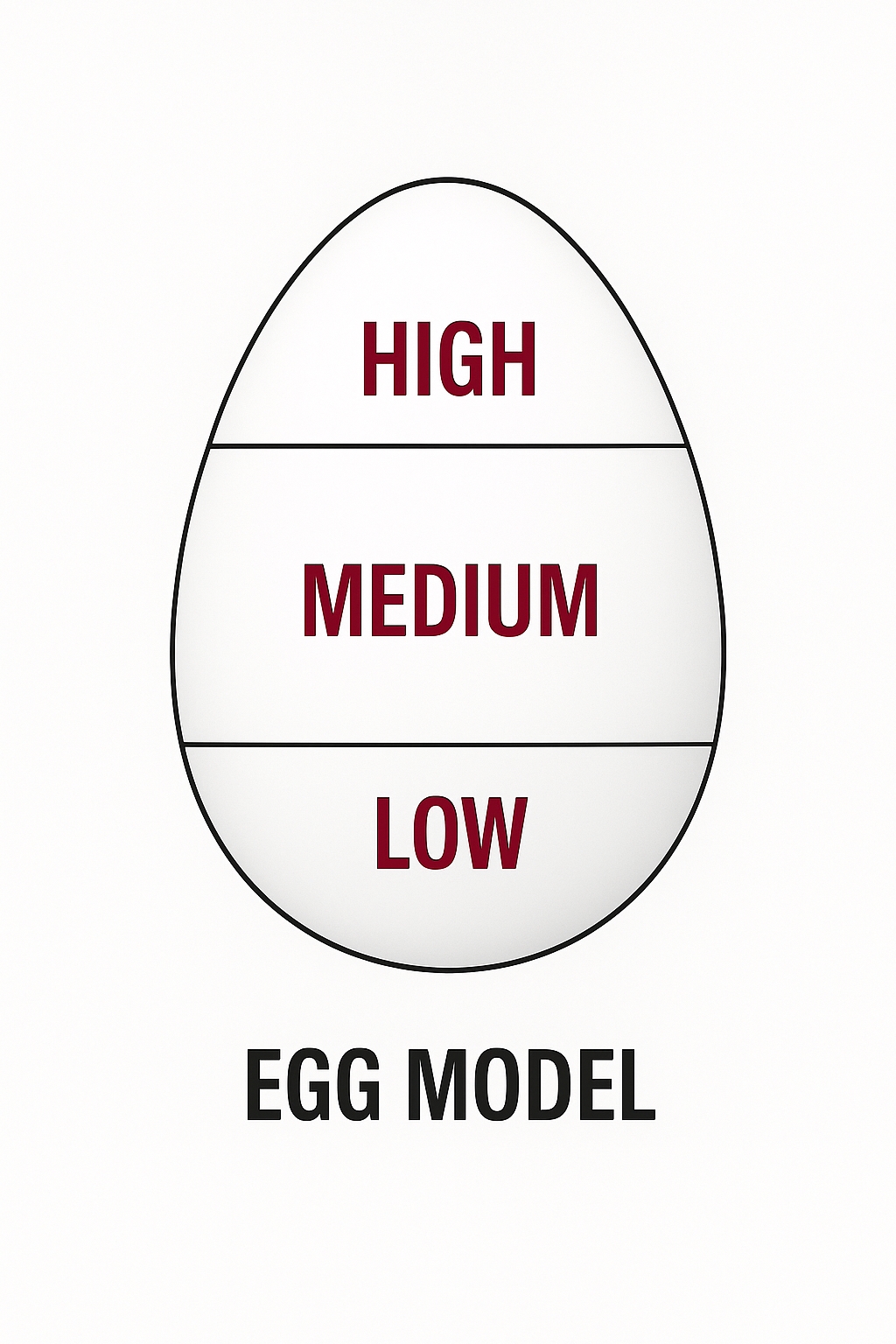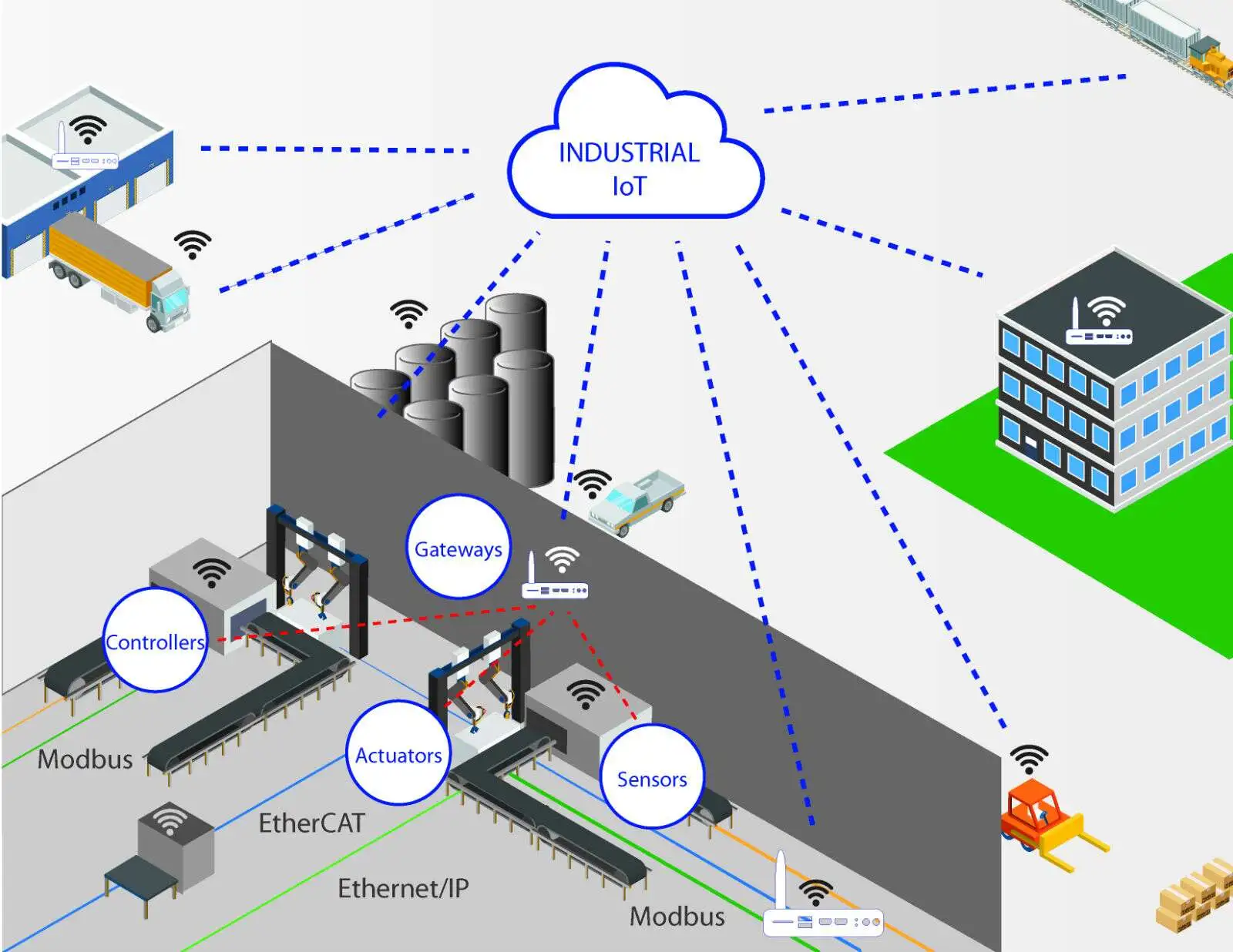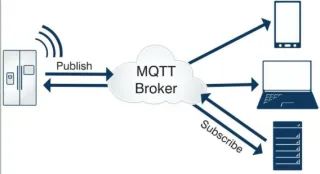Introduction
IoT adoption in industry is increasing year by year, penetrating manufacturing, transportation and logistics, healthcare, consumer electronics, retail, automotive, and other sectors. The era of ubiquitous connectivity is rapidly entering everyday life.
IoT wireless communication technologies fall into two main categories. One category covers short-range technologies such as Zigbee, WiFi, Bluetooth, and Z-wave. The other category is LPWAN (low-power wide-area network) for wide area communication. LPWA itself divides into unlicensed spectrum technologies such as LoRa and SigFox, and licensed spectrum cellular technologies supported by 3GPP, such as EC-GSM, LTE Cat-M (eMTC), and NB-IoT.
NB-IoT stands for Narrow Band Internet of Things.
One foundation of IoT is data transmission. Different IoT services have varying requirements for throughput and latency.
Based on transmission rate, IoT services can be categorized as high, medium, or low rate:
- High-rate services: typically use 3G/4G technologies, e.g., in-vehicle IoT devices and surveillance cameras, which require real-time data transmission.
- Medium-rate services: typically use GPRS, e.g., lockers in residential complexes or supermarkets; these are used frequently but not necessarily in real time, so network throughput requirements are lower than for high-rate services.
- Low-rate services: the LPWAN market targets low-rate, low-power wide-area applications. Today there is no dominant cellular technology dedicated to this segment, and many low-rate services are still supported by GPRS, which raises cost and limits adoption.
Low-rate IoT represents a very large market opportunity. Many devices, such as fire extinguishers in buildings or various environmental monitors used in research, are infrequently active but numerous in aggregate. Collecting their data supports applications like optimizing urban equipment deployment.
eMTC targets medium-rate, low-latency scenarios and suits devices such as POS terminals and smart appliances. NB-IoT targets low-rate, high-latency scenarios such as smart metering, smart parking, vehicle tracking, logistics monitoring, and agriculture/aquaculture monitoring. The low-rate segment accounts for about 60% of IoT applications, leaving large room for growth. NB-IoT’s technical characteristics make it well suited to this segment, attracting interest from network operators and the wider IoT ecosystem.
NB-IoT Technical Advantages
Massive connection density
Compared with 2G/3G/4G, NB-IoT offers a 50–100x increase in uplink capacity. Within a 200 kHz bandwidth, a single base station cell can support about 50,000 users. NB-IoT optimizes storage and access control for massive access scenarios such as smart streetlights, smart waste bins, manhole covers, water meters, electricity meters, and gas meters.
Deep coverage
NB-IoT increases power spectral density. It achieves roughly 20 dB gain compared with LTE, corresponding to about 100x coverage improvement, enabling reliable connectivity in hard-to-reach areas such as underground parking, basements, and utility tunnels. This addresses coverage limitations of existing LTE signals for devices deployed inside buildings or underground.
Low power consumption
NB-IoT uses DRX (Discontinuous Reception) and PSM (Power Saving Mode) to reduce unnecessary signaling and to avoid paging during PSM, allowing devices to remain effectively online while preserving battery life beyond five years. This meets the low-power, long-standby requirements of many IoT devices, especially those that lack continuous power or where battery replacement is impractical, such as wildlife trackers and sensors in harsh environments.
Lower device cost
NB-IoT core network enhancements simplify signaling (small-packet control plane optimizations and PSM/eDRX power saving), reducing message overhead and enabling low-mobility access. Low data rate and reduced complexity allow chip designs to be smaller and cheaper. RF optimizations also lower module cost.
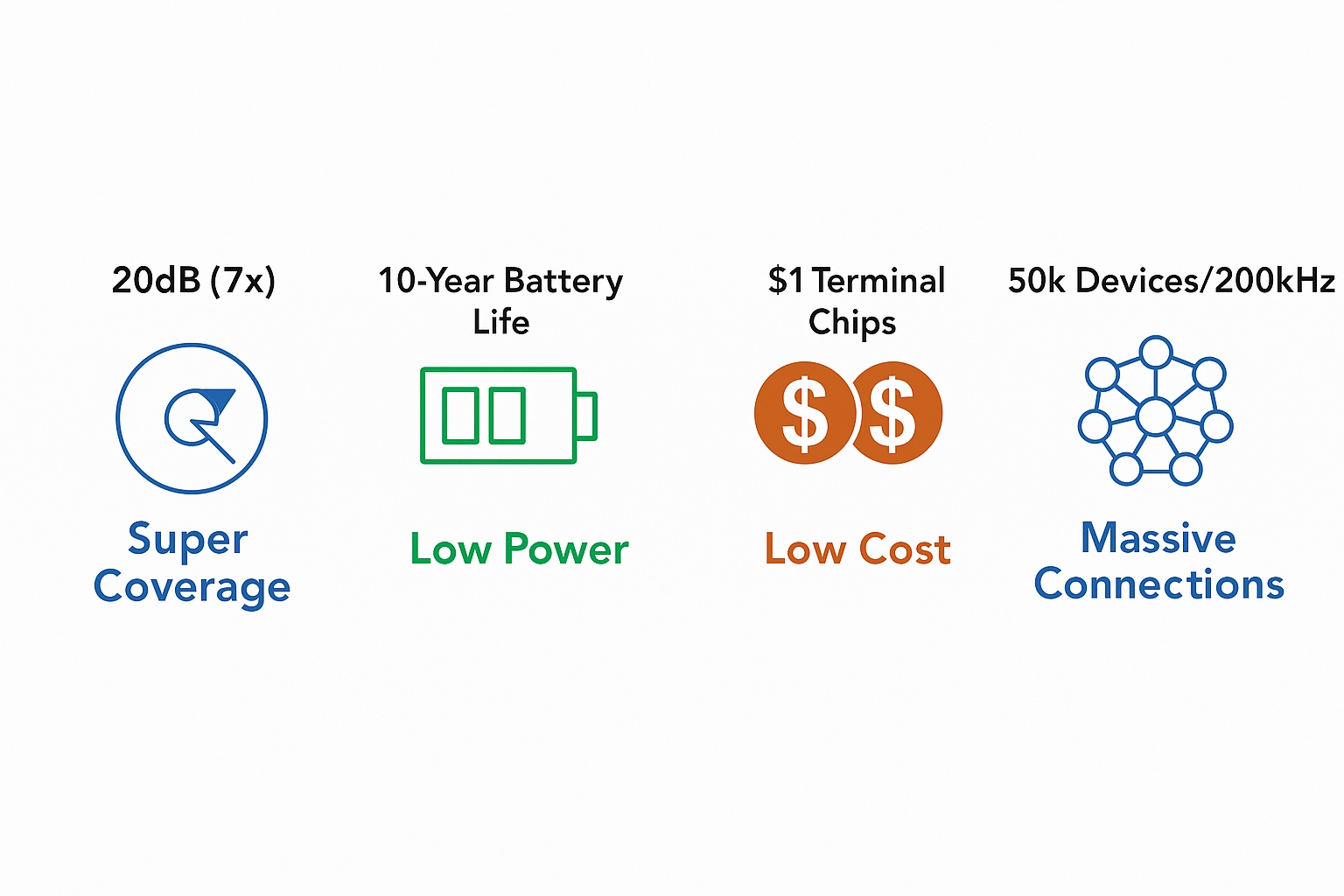
However, NB-IoT has limitations. Module cost may eventually fall below $5, but currently short-range wireless chips supporting Bluetooth, Thread, and Zigbee can be priced around $2, and single-standard chips under $1. This price gap can affect deployment decisions.
Development Timeline
- 2014: Huawei and Vodafone jointly proposed NB-M2M.
- May 2015: Huawei and Qualcomm announced a converged solution using FDMA for uplink and OFDM for downlink, named NB-CIoT (Narrow Band Cellular IoT).
- August 10, 2015: Ericsson and other vendors proposed the NB-
- LTE concept during the GERAN SI phase final meeting.
- September 2015: 3GPP RAN agreed to merge NB-CIoT and NB-LTE into the NB-IoT WID, establishing NB-IoT as the narrow-band cellular IoT standard.
- April 2016: Huawei and Vodafone launched an NB-IoT open lab at the London M2M event.
- April 2016: NB-IoT physical layer specification was frozen in 3GPP Release 13.
- June 2016: NB-IoT core network specifications were frozen in 3GPP Release 13.
- Q1 2017: National plans identified NB-IoT networks as a key communications project during the 13th Five-Year period.
- April 1, 2017: Haier, China Telecom, and Huawei signed a strategic cooperation agreement to develop NB?IoT based smart living solutions.
- April 25, 2017: The GSMA reported only four commercial NB?IoT networks were active globally at that time, with 18 operators in 13 countries planning or testing 40 networks.
- May 2017: SoftBank and Ericsson planned full deployment of Cat?M1 and NB?IoT networks in Japan.
- May 2017: China Unicom Shanghai announced commercial NB?IoT deployment completion in Shanghai by end of May; Shanghai had earlier hosted a large pre?NB?IoT continuous coverage area.
- May 2017: Huawei's Boudica 120 NB?IoT chip was reported to enter large?scale shipments by the end of June 2017.
Industry Chain Structure
The IoT ecosystem spans a broad set of players across two dimensions: the vertical value chain and horizontal technology standards. For LPWAN, a vertical chain has emerged from chips to modules to terminals to operators to applications. Chips are the foundational element, and most mainstream chip and module vendors have explicit NB?IoT plans.
The NB?IoT standard evolved from solutions proposed by Huawei and Qualcomm, and both companies have played significant roles.
Corporate Strategies and Solutions
Huawei
Huawei treats NB?IoT as a strategic priority and has invested in the ecosystem. In 2014 Huawei acquired Neul, a UK cellular IoT chip and solution provider, to build a global IoT capability around Neul’s technology.
Huawei’s NB?IoT chipset integrates baseband, application processor, flash, and power management in a coin?sized package, with provisions for sensor integration. The application processor includes three ARM?M0 cores dedicated to application, security, and communication to simplify function partitioning and reduce cost and power. Future chips are expected to integrate soft SIM to further reduce cost.
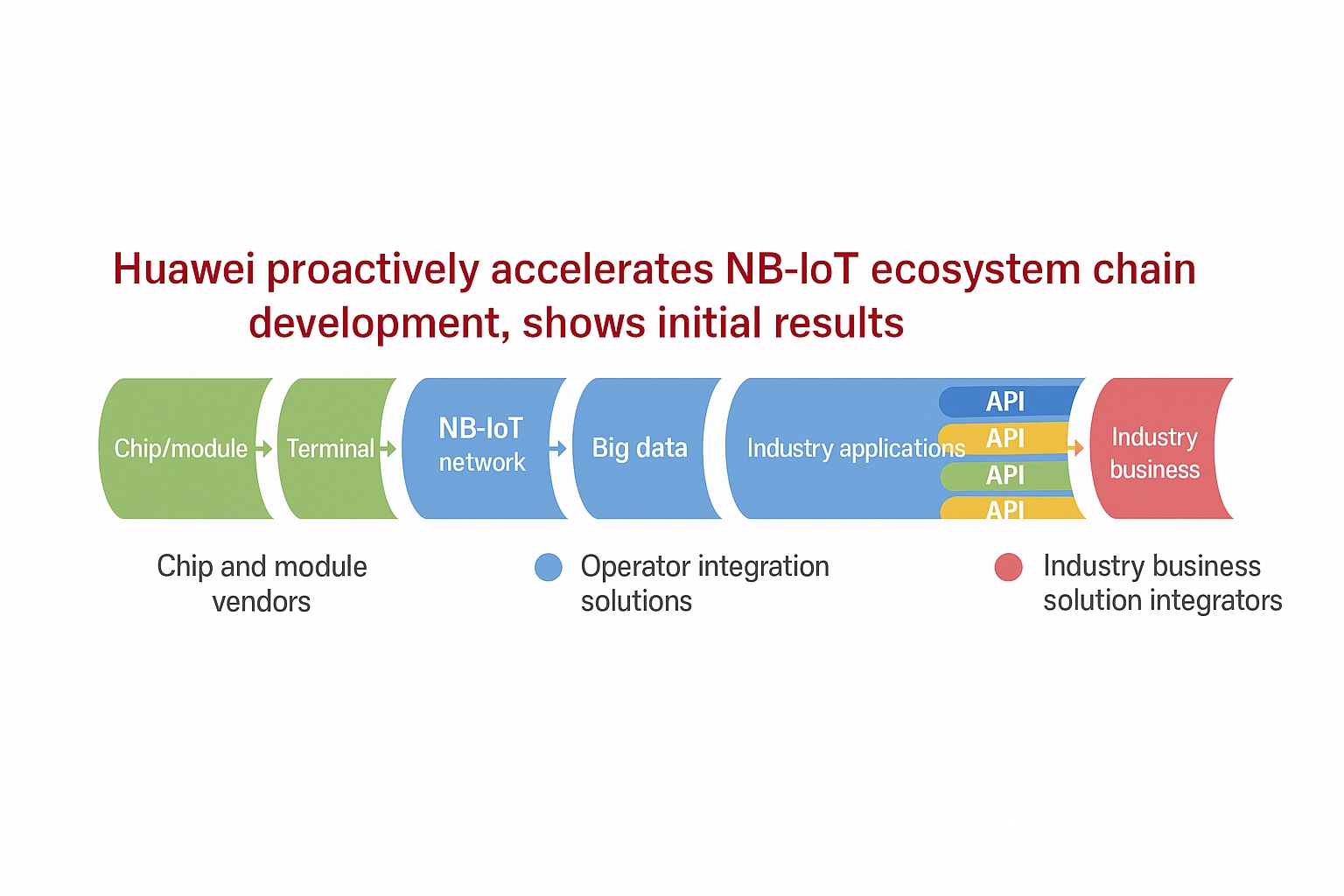
Huawei has published end?to?end NB?IoT solutions including Huawei LiteOS and NB?IoT chipset?enabled terminals, eNodeB base stations that smoothly evolve to NB?IoT, IoT PacketCore supporting Core in a Box or NFV deployments, and cloud?based IoT connection management platforms with big?data capabilities, addressing core operator requirements for low?power, wide?area coverage.
Huawei has also established several open labs worldwide to support end?to?end NB?IoT integration, providing chips, modules, integration support, connection management platforms, and backend service integration, with lab partnerships including Vodafone and regional labs in Shanghai, Korea, and Italy.
Qualcomm
Qualcomm views LTE as the foundational cellular technology for IoT over the next five years. NB?IoT in 3GPP Release 13 is expected to evolve alongside 3GPP developments, helping realize massive IoT through low cost and low power cellular connectivity and laying groundwork for IoT in 5G.
Qualcomm launched the MDM9x07 (Cat?4 up to 150 Mbps), MDM92071 (Cat?1), and later the MDM9206 (Cat?M1) which can be software?upgraded to support NB?IoT. OEM module vendors expected Cat?M1 modules based on MDM9206 in early 2017, with NB?IoT support via software upgrade soon after.
In Release 13 NB?IoT does not support VoLTE, but Qualcomm planned to explore voice support in Release 14. Qualcomm positions NB?IoT as an evolutionary path toward IoT standards applicable to 5G.
Network Operators
Operators across China, South Korea, Europe, the Middle East, and North America have conducted pre?standard NB?IoT pilots and end?to?end technical and business validation.
China Telecom
China Telecom is actively following NB?IoT development and has projects on key NB?IoT technologies, devices, and services. Deployment plans favor using an 800 MHz LTE network for full coverage. Base stations that support both LTE and NB?IoT can share baseband, RF, and antenna resources with 800 MHz LTE sites. To mitigate potential interference and preserve LTE800 evolution flexibility, China Telecom prioritizes a standalone deployment mode.
China Mobile
China Mobile has operated a public IoT platform since late 2014 and had amassed more than 27 million users as of June (year unspecified). China Mobile is accelerating the maturity of a globally unified narrowband IoT industry, building open labs to promote chip and module development and aiming to create a low?cost, low?power, wide?coverage, high?reliability public IoT network.
China Unicom
China Unicom built and opened the world’s first NB?IoT demonstration site in July 2015 and launched commercial IoT services in Shanghai’s Disney area in early 2016. It has conducted NB?IoT trials and proposals for commercial deployment in key cities, planning larger commercial rollouts in 2017 and wider national deployment in 2018.
China Unicom deploys NB?IoT in 900 MHz and 1800 MHz bands. For 900 MHz it uses dynamic spectrum sharing (DSSS). In 1800 MHz continuous coverage areas, a 5 MHz LTE bandwidth is used; where continuous coverage is not available the LTE bandwidth narrows automatically to 3 MHz while keeping the center frequency unchanged, with the freed side spectrum allocated to up to 14 GSM carriers.
Other Vendors and Competing Standards
Across each link of the value chain there are vendors supporting NB?IoT, LoRa, Sigfox, ZETA, Ingenu, and other standards. LoRa and Sigfox operate in unlicensed bands and often use proprietary or non?standard implementations. Licensed?spectrum cellular technologies such as GSM, CDMA, and WCDMA are standardized in bodies like 3GPP or 3GPP2.
Below is a qualitative assessment of market concentration along the chain for NB?IoT and LoRa. Longer bars indicate higher concentration.
Chipset
Multiple vendors have NB?IoT chipset plans, including HiSilicon, Qualcomm, Intel, MediaTek, ZTE Microelectronics, Datang, and Spreadtrum. Existing LTE chipset vendors can also participate, so no single vendor will monopolize the market; concentration is expected to remain under 50%. In contrast, RF chips for LoRa are largely supplied by Semtech, which holds the majority share and creates a concentration above 80% in that segment.
Modules
NB?IoT module shipments are likely to be led by established vendors that already have 2G/3G/LTE module product lines; many vendors are present, so concentration is moderate. LoRa module vendors are often smaller firms, and as LoRa adoption grows many new entrants join, keeping market concentration low.
Terminals
Terminal types are highly diverse across industries and consumer applications, preventing a small set of companies from dominating. Terminal markets are therefore very fragmented.
Network equipment and platforms
Major telecom equipment vendors such as Huawei, Ericsson, ZTE, and Nokia have been core participants in NB?IoT standardization and will likely dominate the cellular equipment and platform segment. Concentration in NB?IoT equipment and platforms can be high, possibly exceeding 80%. For LoRa the equipment and platform segment began with many small vendors; while alliances like the ZTE?initiated China LoRa Application Alliance (CLAA) may increase concentration, it will likely remain lower than NB?IoT in this segment.
Operators
Mainstream operators are clear about deploying and operating NB?IoT networks, so NB?IoT network operation is expected to remain concentrated among the major operators in each market. By contrast, LoRa network operation may include cloud network operators across regions, industry?level network operators, and enterprise private networks, resulting in much lower concentration.
Applications
Whether using NB?IoT or LoRa, IoT applications are highly fragmented across thousands of use cases. These applications do not form large homogeneous markets like traditional communications services; even within the same industry use cases can vary widely. Thus the application layer will remain fragmented.
Summary
NB?IoT’s industry chain shows high concentration in multiple segments, indicating strong leadership by major vendors. LoRa exhibits high concentration at the chip level but otherwise remains characterized by many participants across modules, terminals, equipment, and applications.
Market and Investment Opportunities
NB?IoT activity has stimulated the IoT ecosystem and expanded sensor deployment into niche markets. Two investment areas to watch are:
- Sensors
- Application software and services
The global sensor industry is expected to approach roughly $300 billion around 2020. Some analysts estimate China?based companies could capture about one third of that market, indicating substantial growth potential.
While hardware is critical, monetization and value creation will depend on application software and services developed for specific use cases. These software and service layers represent large future markets and are a primary avenue for business and investment opportunities.
Compared with entertainment?oriented or high?performance IoT, NB?IoT targets low?end IoT terminals and is suitable for wide deployment. Applications such as smart metering, smart parking, and asset tracking in domains like smart homes, smart cities, and smart manufacturing are likely to see broad adoption.
Currently, cellular IoT connections represent about 10% of total IoT connections. In 2016 roughly 6.4 billion IoT devices were in use globally, a 30% increase over 2015, with a market value reported at approximately 120 billion (currency unit as originally reported). Forecasts project around 77 billion devices connected to the IoT by 2022 with a market size exceeding one trillion US dollars, and NB?IoT could account for about 30% of those connections, reaching approximately 23.2 billion connected devices.
 ALLPCB
ALLPCB


